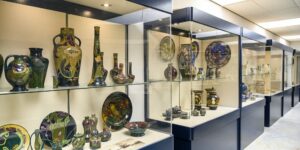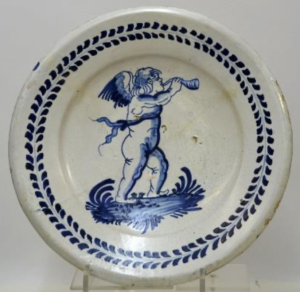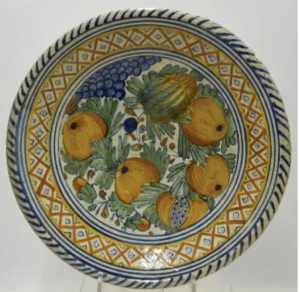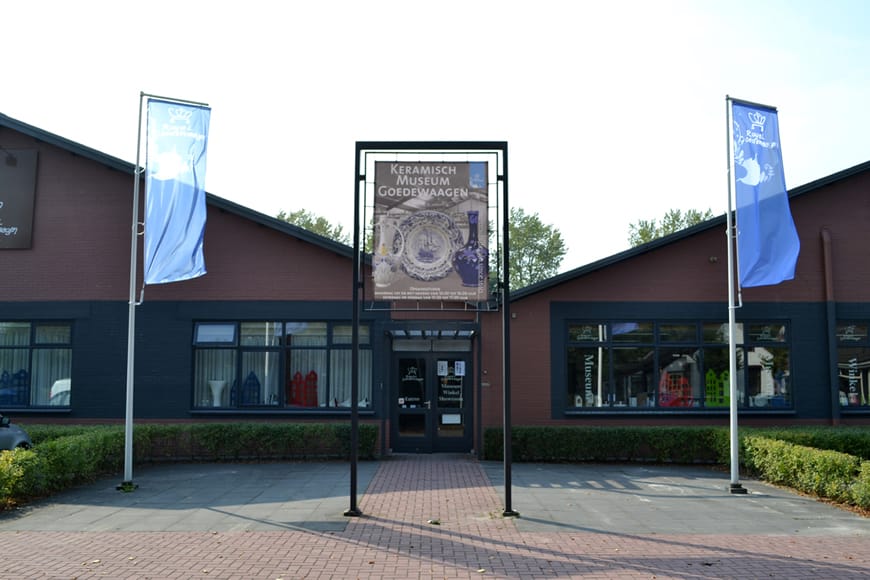
Keramisch Museum Goedewaagen (Ceramic Museum Goedewaagen), established in 1893 in Nieuw-Buinen, Drenthe, is housed in the former pottery factory of Royal Goedewaagen, a company dating back to 1610. This museum is dedicated to preserving and exhibiting Dutch ceramics, showcasing a vast array of collections that span various eras and styles.
Royal Goedewaagen in Gouda, originally a pipe factory from 1779, expanded throughout the 19th century by acquiring smaller factories. This growth allowed it to evolve into a major ceramic producer with an international footprint. The transition to a modern, technologically advanced factory in 1909 at Jaagpad marked a significant phase, enabling Goedewaagen to blend centuries-old Dutch ceramic traditions from Gouda with new production techniques.
The museum now has a collection of approximately 4,000 pieces of ceramics, ranging from decorative pottery to tableware, from tile to tile tableau to miniature house. The permanent collection consists of around 800 objects, which together tell the story of Dutch pottery production from 1880 onwards. Since 1989 the museum’s foundation does academic research on decorated Dutch ceramic made after this period.
The museum’s collection includes not only Goedewaagen products but next also a collection of Old Dutch majolica from the 1550-1650 period. These pieces provide insights into the artistic expressions of that time, marked by vibrant colors, reflecting the skills of craftsmen and the cultural exchanges of the period.
In the sixteenth century, many potters from Antwerp migrated to the northern Netherlands and established themselves in various cities. By 1600, the city of Haarlem emerged as the leading majolica centre. Multiple inventories show that forty-five potters had settled there and the production of majolica increased proportionally. Although it is impossible to identify and attribute the work of the forty-five potters in Haarlem, there is one exception: the wares of Willem Jansz. Verstraeten, who is considered the most important potter in Haarlem during the second quarter of the seventeenth century.
In addition to majolica, the museum’s collection also features modern ceramics, industrial products, and special exhibitions on decorative tiles and pipes. The museum serves a rich collection. Also, the museum regularly organizes temporary exhibitions and educational programs aimed at spreading knowledge about ceramics and its historical context in the Netherlands.
Focusing on both historical and modern ceramics, the Ceramic Museum Goedewaagen offers an insight into the rich ceramic traditions of the Netherlands.




